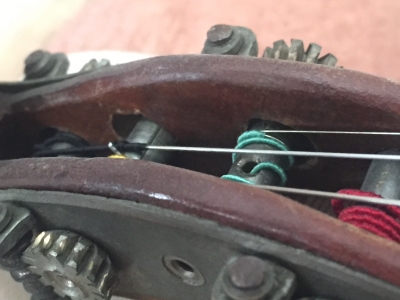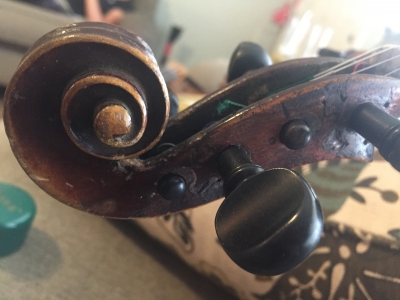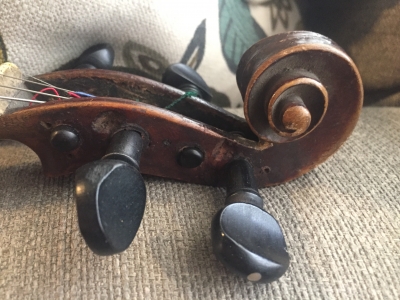Welcome to our forum. A Message To Our New and Prospective Members . Check out our Forum Rules. Lets keep this forum an enjoyable place to visit.
Currently working on errors from the latest (SimplePress) forum update. Many issues have been resoled and others are being worked on. Thank you for your patience.
 Topic RSS
Topic RSS



 (0 votes)
(0 votes) Regulars
 Offline
Offline

Hi steveduf (and others). I would imagine that it would be difficult to fit a violin in a case with the tuners protruding from the back like that. It looks like they should work like standard guitar tuners.
A neat method to eliminate them (at least in my mind), would be to purchase a small plate of 1mm thick woven carbon fiber (inexpensively obtained via eBay from China, since it used extensively in the construction of hobby radio controlled vehicles) and use the tuner frames as a pattern. I would secure using same screw positions. In keeping with the intent of the original maker, I would use Knilling Perfection pegs.
A fancier fix would be to inlay pieces of Koa wood or similar where the plates were, if you had access to a Drexel tool with router attachment.
Success is the progressive realisation of a worthy ideal. —Earl Nightingale.
Regulars










It doesn't look to me from that photo that the plates are inlaid - they just seem to be screwed straight on to the side of the peg box. If that's the case, the only thing to fill in would be the screw holes. Then it would be down to the state of the peg holes themselves whether normal pegs could be fitted.
Regulars







Regulars
 Offline
Offline
This is Mackenzie’s lion head that has the mechanical tuners on it. As you can see on this one they ruined the existing peg holes and would require plugging and re-boring.
this one is staying as is...
i have another violin which the plates were removed by someone else, and at least the original holes were not disturbed but it is quite ugly. We are remodeling right now and might take a day or so but I’ll post picks of it also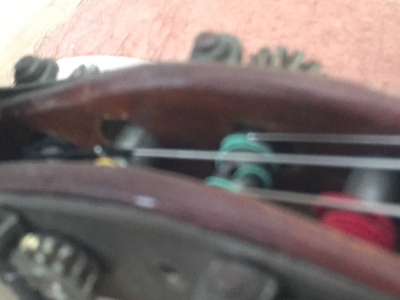

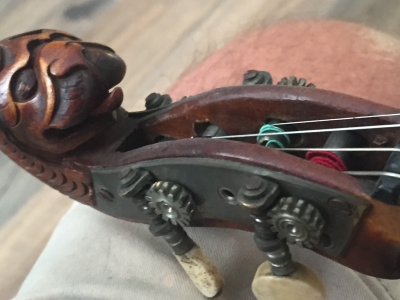

Regulars
 Offline
Offline

Hi steveduf (and others). I did not realize that the screws were through holed. It is interesting that the metal plate acts as a bearing surface for the non geared side of the peg. You would have to remove the plates to see if a standard peg would fit.
Success is the progressive realisation of a worthy ideal. —Earl Nightingale.
Regulars
 Offline
Offline

Hi steveduf (and others). Suggested repair. Remove pegs and use a maple dowel to fill plate screw holes within peg box. Plane outer surface of peg box (if necessary) to obtain a flat surface. Shape two pieces of 2-ply maple veneer (equal to Sauers & Company, let me know if you need some. It is about 1 mm thick.) to cover damaged outer surface of pegbox and (perhaps) a portion of scroll. Glue in place and sand to blend with mating surfaces. Use a Dremel Advantage (or equal) dry wall router with electrical box bit to route out peg holes and finish with peg reamer. Stain and varnish to blend with existing.
Of course, the sky is the limit when it comes to veneer (bird's eye maple, etc) but the above method would not focus attention on the repair.
Success is the progressive realisation of a worthy ideal. —Earl Nightingale.
1 Guest(s)


 Log In
Log In Register
Register
















